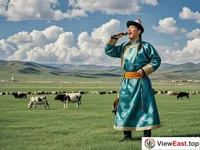


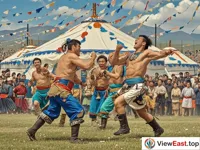
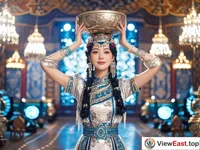
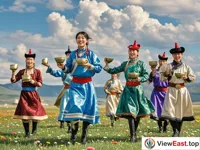
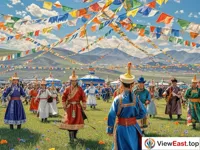
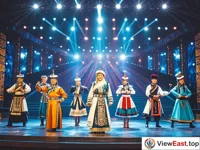
The music and dance of the Mongolian people are like the wind across the grasslands, free and uninhibited. They are the soul of Mongolian culture and a dazzling jewel in the treasure trove of Chinese culture. This article will explore the artistic charm of Mongolian music and dance from multiple dimensions, showcasing their rich cultural connotations and life content.
I. The Melody of Music
Mongolian music, with its unique melodies and rhythms, showcases the magnanimity and deep emotions of the grassland people:
Long Tune: The long tune is representative of Mongolian music, with its extended melody expressing boundless nostalgia for the grasslands and hometown.
Throat Singing (Khoomei): Throat singing is a unique vocal technique that can produce multiple pitches at once, showcasing the mystery and power of Mongolian music.
Morin Khuur: The Morin Khuur, or horsehead fiddle, is a traditional Mongolian musical instrument with a melodious sound that complements the long tune.
II. The Rhythm of Dance
Mongolian dance, with its vigorous movements and strong sense of rhythm, conveys the vitality and warmth of the grassland people:
Wrestling Dance: The wrestling dance imitates wrestling movements, showcasing the bravery and strength of the Mongolian people.
Bowl Dance: Performers dance while balancing bowls on their heads, with graceful and skillful movements, reflecting the superb artistry of Mongolian dance.
Cup Dance: The cup dance is characterized by holding cups and features smooth movements and lively rhythms, full of the breath of life.
III. The Integration of Music and Dance
The combination of music and dance is at the core of Mongolian art, together forming the unique style of Mongolian culture:
Festival Celebrations: In Mongolian festival celebrations, music and dance always accompany each other, creating a joyful and harmonious atmosphere.
Social Activities: Music and dance are essential components of Mongolian social activities, through which people exchange emotions and enhance friendships.
Cultural Inheritance: The integration of music and dance is also an important way to inherit Mongolian culture, helping the younger generation to understand and learn the art of their nation.
IV. Modern Influence
In modern society, Mongolian music and dance continue to evolve and innovate:
Cultural Exchange: Mongolian music and dance serve as ambassadors of cultural exchange, promoting mutual understanding and respect between different cultures.
Artistic Innovation: Modern artists incorporate elements of Mongolian music and dance into contemporary artistic creations, giving them new vitality.
Tourism Promotion: Mongolian music and dance have also become important cultural resources to attract tourists, promoting the development of local tourism.
V. Conclusion
Mongolian music and dance are the essence of Mongolian culture, not only displaying the life emotions of the Mongolian people but also being an integral part of the multicultural fabric of China.